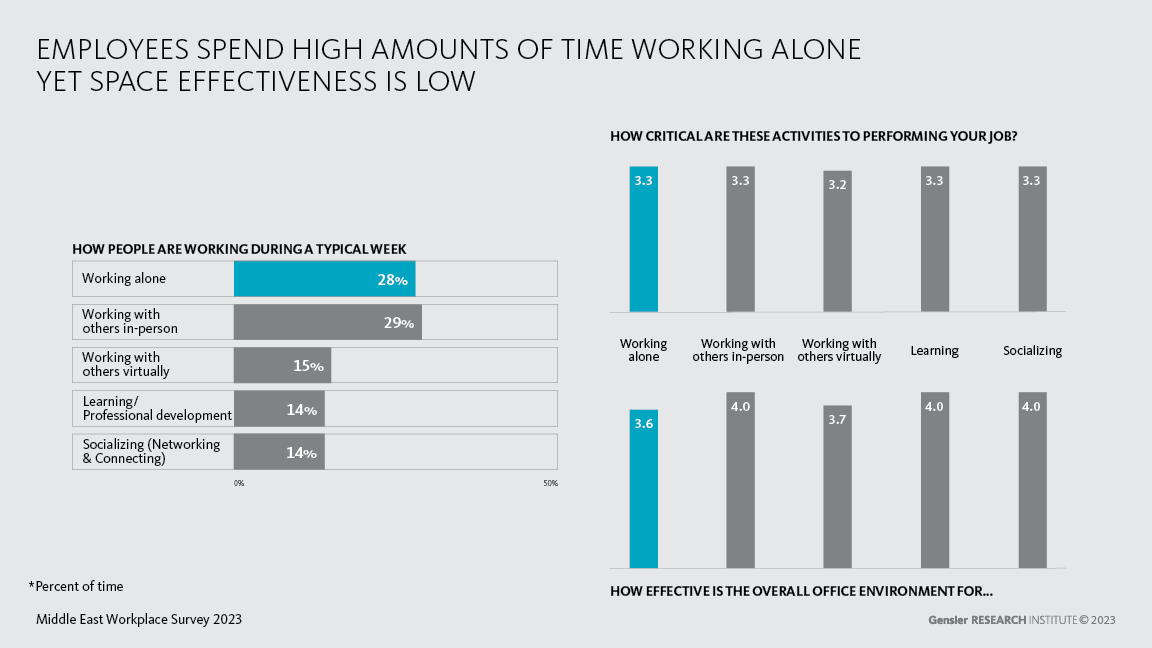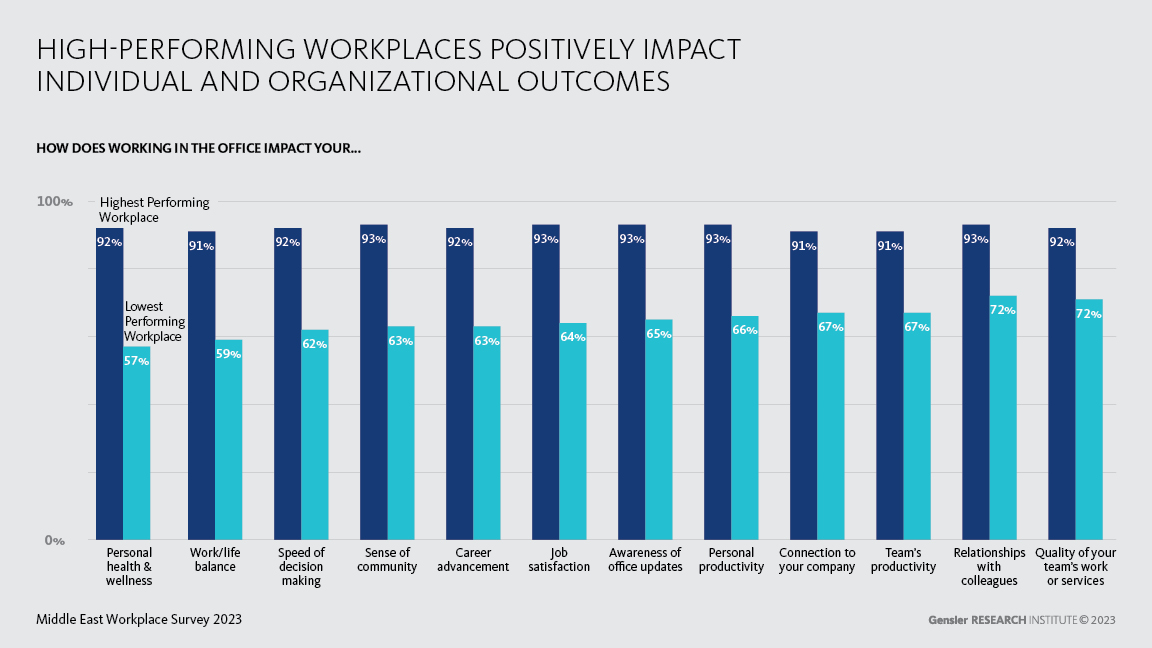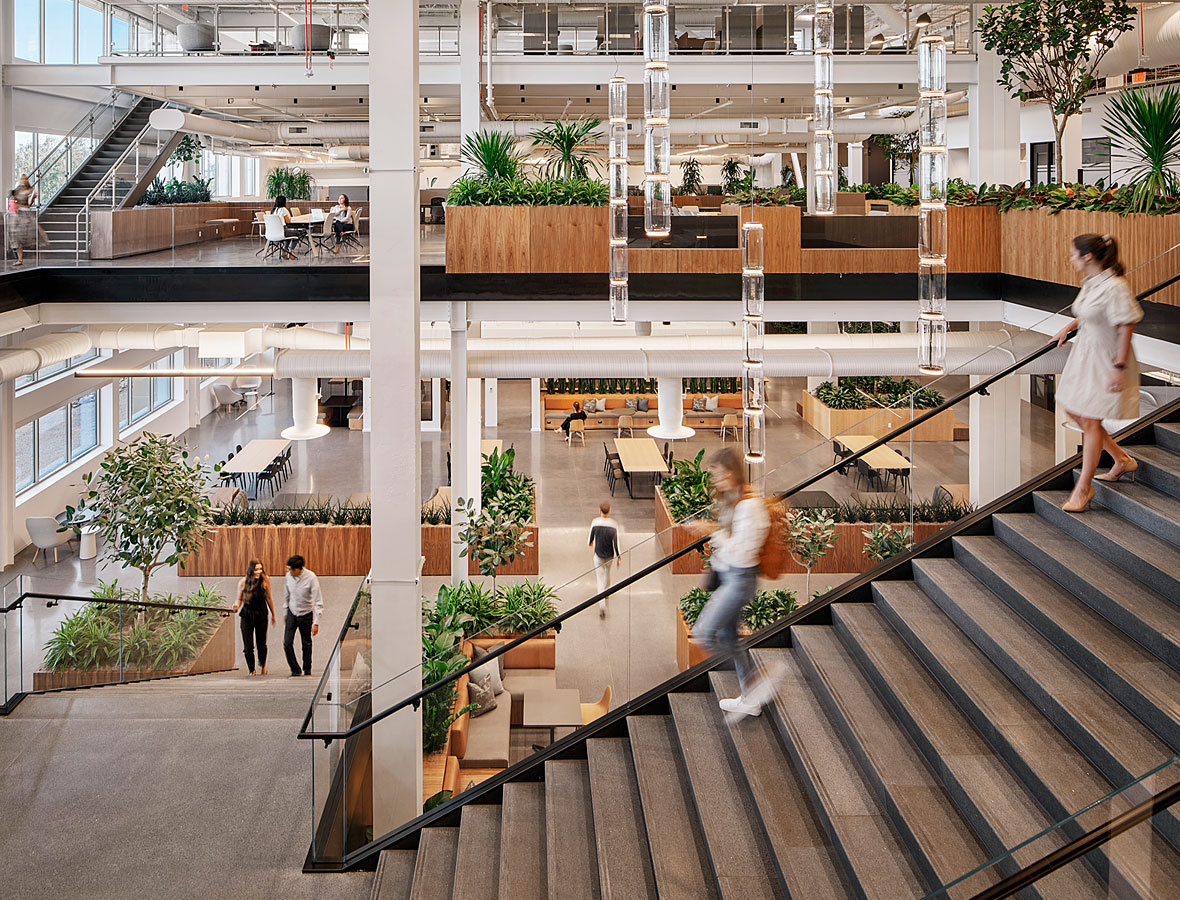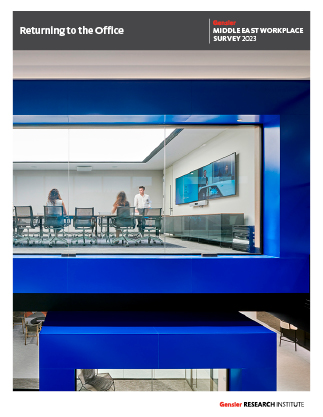The Middle East is home to several of the fastest-growing economies in the world, attracting businesses and workers from across the globe. The amalgamation of cultures, expectations, and ways of working across the region create unique challenges to design workplaces that accommodate everyone. Gensler’s latest Middle East Workplace Survey of over 2,000 office workers across Saudi Arabia, United Arab Emirates, and Kuwait reveals a ripe opportunity to make critical changes to the workplace to adapt to new expectations of work.

The workplace is currently underperforming for critical work activities.
Office workers in the Middle East spend 28% of their typical week working alone and they rate it as a critical activity to perform their job. More than half of the meetings in the office are also conducted with both in-person and virtual participants, according to respondents. Yet the data indicates that, on average, the workplace is less effective for supporting working alone and working with others virtually.

Workers in the most innovative companies across the Middle East have access to the most diverse workspaces.
On average, the work style and preferences of workers in the Middle East are comparable to those of workers at the most innovative companies in our global research study of nine countries. During a typical work week, they spend less time working alone and more time learning, socializing, and working with others virtually. The most innovative companies accommodate this division of time across different work modes by providing easy access to spaces designed for critical work activities, such as spaces for video conferencing or concentration.

High-performing workplaces positively impact business outcomes.
The highest-performing workplaces are not only highly effective — they also offer a great experience. Similar to the most innovative companies, these workplaces offer a diverse array of workspaces that employees have the autonomy to choose between to work most effectively. The return on investment in high-performing workspaces was clear in our survey data. They significantly outranked the lowest-performing workplaces across all individual, team, and business outcomes measured.

Middle East Workplace Survey 2023
The Gensler Research Institute conducted an anonymous, panel-based survey of 2,054 office workers across the Middle East, using a third-party panel provider in the field between November 3 and December 15, 2022. The research is part of a larger study of 14,000+ office workers across nine countries conducted in Q3/Q4 2022. At the time of the data collection, respondents were required to be working from the office at least some of the time, excluding fully remote workers and workers who had not returned to the office since the start of the pandemic. Respondents are distributed across nine client industries and represent a broad cross section of demographics, including job role, company size, age, commuting distances, and geographies across Saudi Arabia, UAE, and Kuwait.
Download the full Middle East Workplace Survey 2023 to explore how the workplace can offer experiences and spaces that respond to the needs and desires of office workers. Our data provides key insights into where design interventions can be made to improve the overall effectiveness and experience of the modern office.
